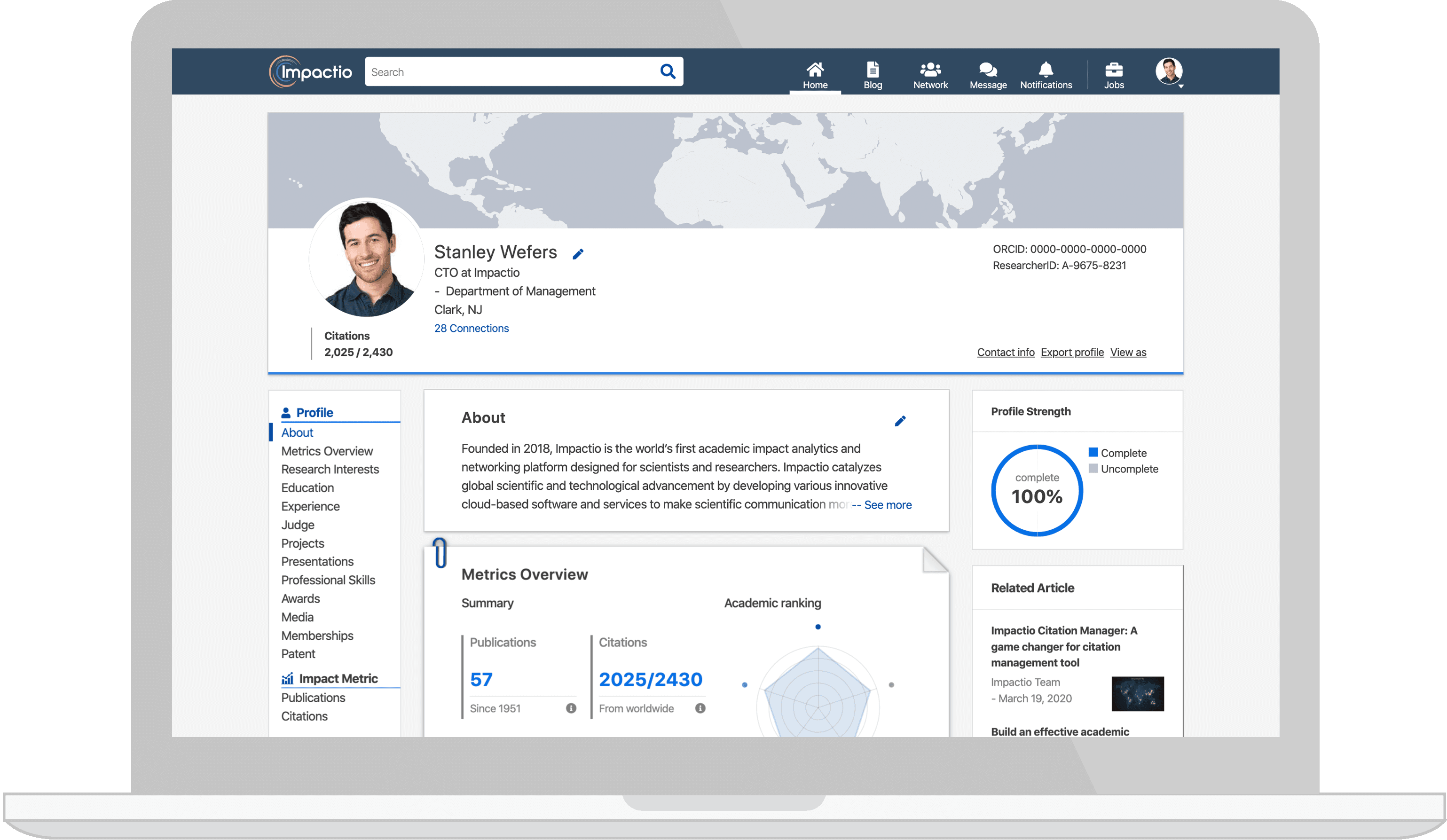The academic profiles of professionals on Impactio do a few important things, such as highlighting the research interests, citations, and location (via university) of the person in question. When you discover worldwide extraordinary researchers, the platform offers a lot in terms of understanding and pinpointing what these academics have spent their careers working on and how many publications they have, as well as the impact their research has created.
But academics don’t usually have the best sense of digital marketing or perhaps branding themselves, which is where the work of the developer comes in for this growing platform and better understanding some of the essential programmings that Impactio provides.
G-Index Weight
The G-Index score on an academics profile is like squaring the number of publications the author holds, and using that product as the number of citations the author has received. For example, an author/researcher who has a G-Index of 10 means that the author has at least 10 publications but has been received at least 100 citations, respectively, for their publications.
The G-Index is important because it is also impacted by the potential SEO ranking that the author has, which, in effect, allows that authors rank in Google Scholar to receive more APA citations for example.
This doesn’t necessarily mean that the academics work is of the highest degree, or the most innovative in the field, even though it might be, but rather suggests that other algorithms at play influence their rating.
Still, having a high G-Index on a sight that is dedicated to promoting the work of academics means a lot in this space, and will help researchers get noticed for their lifelong work, and potentially collaborate with new researchers they never thought they were going to connect with.
Overall, the G-Index is a statistical ranking and data point, and should be considered when ranking academics who reside in different fields because sometimes the nature of publishing work in one field is more rigorous than publishing work, in say, the social sciences, where citations might be easier to grasp. Mechanical engineering work is usually only applicable to other engineers so this weight is something to consider.
Percentages
Google Scholar doesn’t give you ranked percentages of the types of articles you have published, and this is one clear strength and the potential advantage of the Keyword capabilities on Impactio that developers and academics can get excited about.
The profile interface clearly shows audience members which keyword, per type of publication, per issue area, as a percentage of their academic ranking. The rankings can be significant, especially when determining what academics best subject matter is. In this way, an academic might discuss in their profile section who they are and what they are passionate about, but their academic numerical ranking as a percentage helps other academics narrow their search when trying to collaborate with potential researchers. It is important to keep in mind that researchers and PhDs usually have very specific and niche research interests, and locating someone who also shares a passion for the same sub-topics is one-way Impactio can change the professional networking abilities of academics.
Higher Ed Institutions
Citations on Impactio are heavily influenced by their institutional ranking. For example, a computer scientist based in Hong Kong has many of his citations given by other institutions in mainland China, a clear influence that this researcher is well known in one geographic and geopolitical region of the world with many technocrats, and lesser well known, although cited still, in other networks such as North America or even South Asia. This function on Impactio is important for two reasons:
1. It exposes the profile, reputation, and academic standing of the most highly cited institutions in relation to the author.
2. It invites other academics to think about how they see these universities and possibly invites developers to edit and update what these universities are more known as the history of the institution evolves in real-time.
Discovery
All of these new metrics will take some time for users and academics alike to become friendly with their meaning and potential worth. The worth of these metrics will only grow as the network itself becomes saturated with more users, exposing which universities are cited the most overall. This process, in effect, will demand the best freelance developers to work on tweaking these metrics, keeping things accurate on the back end, and better understanding the algorithms that make this sight essential for PhDs and professors from around the globe.
